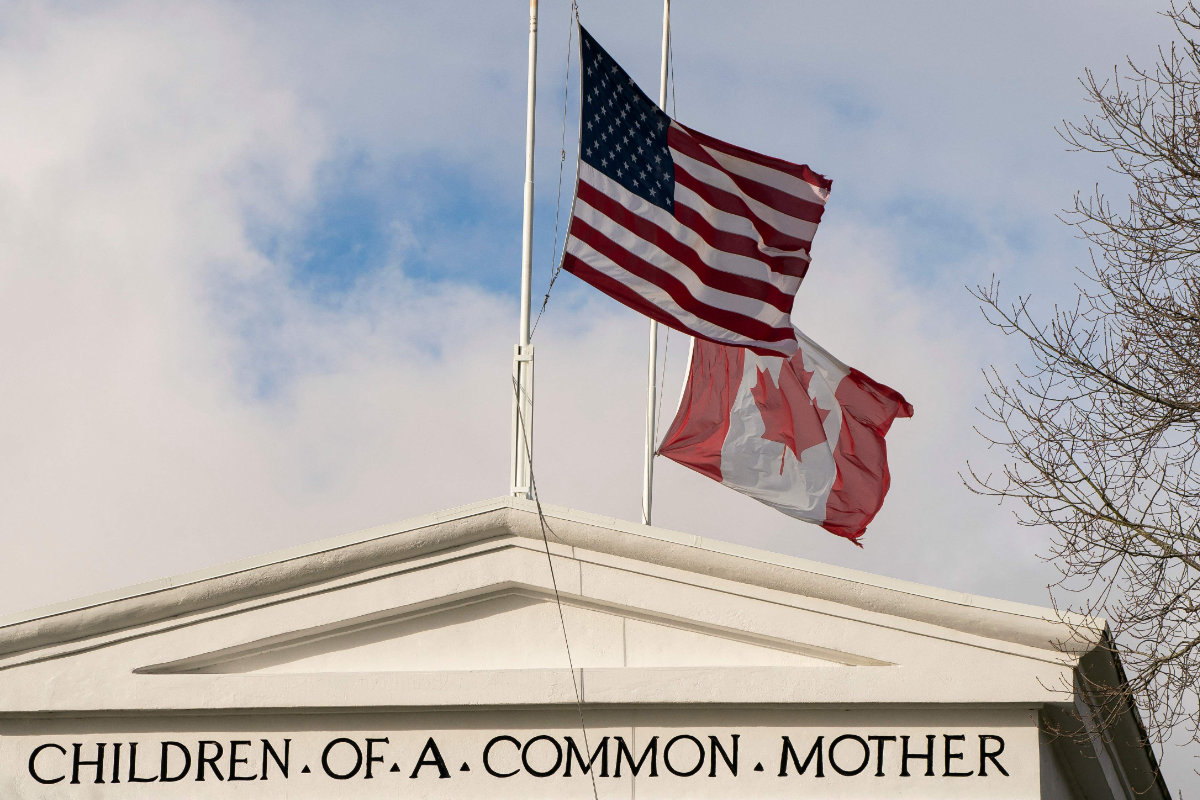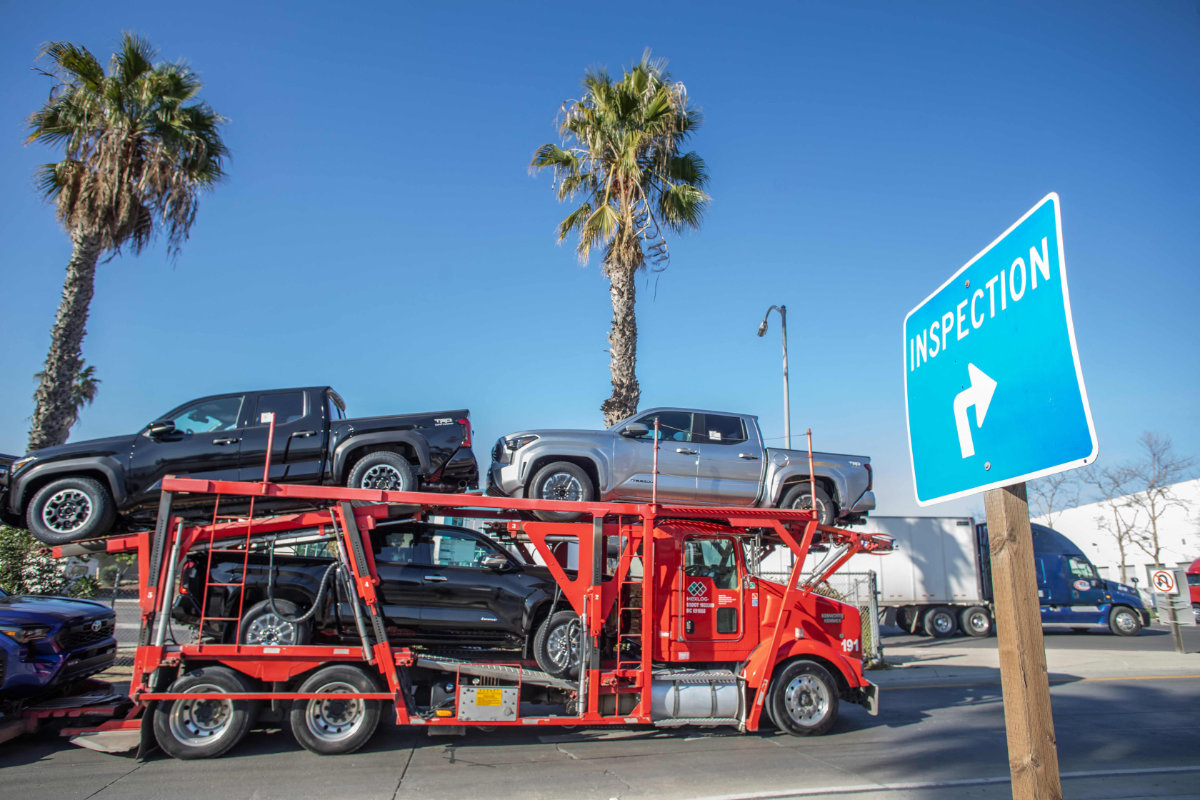LONDON: Far-right protesters fueled by anger and false online rumors hurled bottles and stones at officers and set a police van ablaze Tuesday outside a northwest England mosque near where three girls were fatally stabbed a day earlier.
Prime Minister Keir Starmer condemned the “thuggery” and said the crowd had hijacked what had earlier been a peaceful vigil attended by hundreds in the center of Southport to mourn the dead and 10 surviving stabbing victims, seven of whom were in critical condition.
Police said the violent crowd was believed to be supporters of the English Defense League, a far-right group, and the unrest was inspired by rumors about the identity of the teenage suspect arrested on suspicion of murder and attempted murder.
“There has been much speculation and hypothesis around the status of a 17-year-old male who is currently in police custody and some individuals are using this to bring violence and disorder to our streets,” Merseyside Police Assistant Chief Constable Alex Goss said.
Police previously said a suspect’s name circulating on social media accounts was incorrect and the boy was born in Britain, contrary to online claims that he was an asylum seeker.
The Liverpool Region Mosque Network posted a statement decrying the “heinous” stabbing as an attack against society that was unconnected to Islam.
“A minority of people are attempting to portray that this inhumane act is somehow related to the Muslim community,” the group said on the X social media platform. “Frankly it is not, and we must not let those who seek to divide us and spread hatred use this as an opportunity.”
Officers outside the Southport Mosque in riot gear were pelted with objects by members of the crowd, some of whom wore masks, amid chants of “No surrender!” and “English till I die!” Firecrackers exploded, sirens wailed and a helicopter hovering overhead added to the chaos.
Some officers were bleeding after being struck by objects and police said one had a broken nose.
A day earlier, a short distance from the turmoil, the girls had taken part in a Taylor Swift-themed dance and yoga workshop on the first week of summer vacation when a teen armed with a knife entered the studio and began a vicious attack, police said.
“It’s difficult to comprehend or put into words the horror of what happened,” Home Secretary Yvette Cooper said while briefing members of Parliament. “What should have been a joyful start to the summer turned into an unspeakable tragedy.”
Alice Dasilva Aguiar, 9, Elsie Dot Stancombe, 7, and Bebe King, 6, died from their injuries, police said.
“Keep smiling and dancing like you love to do our princess,” Aguiar’s parents said in a statement released by police. “Like we said before to you, you’re always our princess and no one would change that.”
King’s family said no words could describe their devastation at the loss “of our little girl Bebe.”
Eight children and two adults remained hospitalized after the attack in Southport. Both adults and five of the children were in critical condition.
An emotional crowd that gathered in Southport outside The Atkinson theater and museum in the early evening held a minute of silence for the victims.
June Burns, the mayor of the Sefton region that contains Southport, called for calm and respect and urged people to be good to one another. She said she was overcome with emotion when she visited the scene of the tragedy earlier.
“It’s unbelievable that we find ourselves laying flowers for little girls who just wanted to dance,” she said.
Swift said earlier on Instagram that she was “completely in shock” and still taking in “the horror” of the event.
“These were just little kids at a dance class,” she wrote. “I am at a complete loss for how to ever convey my sympathies to these families.”
People left flowers and stuffed animals in tribute at a police cordon on the street lined with brick houses in the seaside resort near Liverpool where the beach and pier attract vacationers. They also posted online messages of support for teacher Leanne Lucas, the organizer of the event, who was one of those attacked.
The 17-year-old suspect was arrested on suspicion of murder and attempted murder shortly after the attacks just before noon. Police said he was born in Cardiff, Wales, and had lived for years in a village about 3 miles (5 kilometers) from Southport. He has not yet been charged.
The rampage is the latest shocking attack in a country where a recent rise in knife crime has stoked anxieties and led to calls for the government to do more to clamp down on bladed weapons, which are by far the most commonly used instruments in UK homicides.
The prime minister was jeered by some as he visited the crime scene and lay a wreath of pink and white flowers with a handwritten note that said: “Our hearts are broken, there are no words for such profound loss. The nation’s thoughts are with you.”
“How many more children?” one person yelled as Starmer was getting in his car. “Our kids are dead and you’re leaving already?”
Starmer told reporters earlier that he is determined to get a grip on high levels of knife crime but said it was not a day for politics.
Witnesses described hearing screams and seeing children covered in blood in the mayhem outside the Hart Space, a community center that hosts everything from pregnancy workshops to women’s boot camps.
Joel Verite, a window cleaner riding in a van on his lunch break, said his colleague slammed on the brakes and reversed to where a woman was hanging on the side of a car covered in blood.
“She just screamed at me: ‘He’s killing kids over there. He’s killing kids over there,’” Verite told Sky News.
The woman, who was on the phone with police, directed him to where the violence was unfolding and then collapsed. Verite said he ran in the direction she had pointed.
A woman honking the horn of her car caught his attention and he found her with five or six bloody children inside. The woman said she was trying to get the kids to safety.
“It was like a scene you’d see on a disaster film,” he said. “I can’t explain to you how horrific it is what I saw.”
He ran to the dance studio, where he was startled to lock eyes with a man in a hooded tracksuit holding a knife at the top of the stairs.
“All I saw was a knife and I thought: ‘There are more people in there,’ and I just wanted to hurt him so bad,” Verite said. “But I was scared for myself and I wanted to help people. So I came outside and I was screaming because I knew where he was.”
Britain’s worst attack on children occurred in 1996, when 43-year-old Thomas Hamilton shot 16 kindergartners and their teacher dead in a school gymnasium in Dunblane, Scotland. The UK subsequently banned the private ownership of almost all handguns.
Mass shootings and killings with firearms are exceptionally rare in Britain, where knives were used in about 40 percent of homicides in the year to March 2023.
Mass stabbings are also very rare, according to Iain Overton, executive director of Action on Armed Violence.
“Most knife attacks are one-on-one and personal — either domestic violence or gang related — so this tragedy is very unusual and, accordingly, garners lots of media interest,” Overton said. “This offers no comfort to the grieving families, of course.”






























